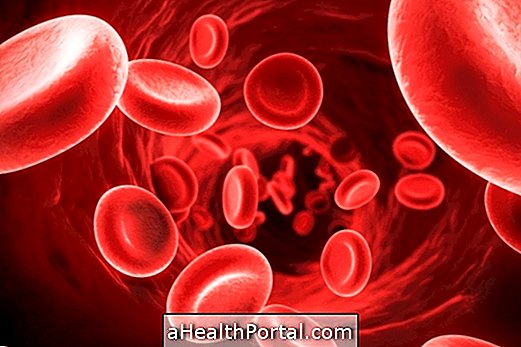Myelodysplasia, also called myelodysplastic syndrome, is considered a type of cancer in which the bone marrow produces defective cells or even without sufficient maturation to the bloodstream, resulting in the presence of anemia, tendency to frequent infections and bleeding, which can generate very serious complications.
Although it may occur at any age, it is more common in the elderly, and most of the time, its causes are unclear, although in some cases it may arise as a consequence of previous cancer treatment with chemotherapy, radiation therapy or exposure to chemicals such as benzene or smoke, for example.
Myelodysplasia can be cured, usually achieved with bone marrow transplantation, however, this is not possible for all patients, and is indicated through the evaluation of the hematologist. There are also treatment options with chemotherapy drugs.

It should be remembered that there are different types of myelodysplasia, which can be caused by different genetic alterations and have slight variations in the way of manifesting and different gravity, for example.
Main symptoms
The bone marrow is an important site of the body that produces blood cells, such as red blood cells, leukocytes, which are the white blood cells responsible for the defense of the body and the platelets, which are essential for blood clotting. Therefore, their commitment produces signs and symptoms such as:
- Tiredness;
- Pallor;
- Shortness of breath;
- Tendency to infections;
- Fever;
- Bleeding;
- Red spots on the body
In the initial cases, the person may not have symptoms, and the disease ends up being discovered in routine exams. In addition, the amount and intensity of symptoms will depend on the types of blood cells most affected by myelodysplasia and also the severity of each case.
In addition, in about one-third of cases, myelodysplastic syndrome can progress to acute leukemia, a serious cancer of the blood cells. Learn more about acute myeloid leukemia.
Thus, it is not possible to determine a life expectancy time for these patients, since the disease can evolve very slowly, for decades, as it can progress to a severe form, with little response to treatment and cause more complications in months to few years.
What are the causes
Myelodysplastic syndrome has a genetic cause, but in many cases the reason for this DNA change is not found and is classified as primary myelodysplasia. despite having a genetic cause, this disease is not hereditary.
Secondary myelodysplasias, for example, are due to poisonings caused by chemicals such as chemotherapy, radiation therapy, benzene, pesticides, tobacco, lead or mercury.

How to confirm
To confirm the diagnosis of myelodysplasia, the hematologist will make the clinical evaluation and request tests such as:
- Hemogram, which determines the amount of red blood cells, leucocytes and platelets in the blood;
- Myelogram, which is the bone marrow aspirate able to assess the amount and characteristics of the cells at this site. Learn more about how it is done and when the myelogram is indicated;
- Genetic and immunological tests, such as karyotype or immunophenotyping;
- Bone marrow biopsy, which may provide more information about bone marrow content, especially when it is heavily altered or suffers from other complications, such as fibrosis infiltrates. Understand when it is necessary and how the bone marrow biopsy is done;
- Dosage of iron, vitamin B12 and folic acid, as the deficiency of these can cause changes in blood production.
In this way, the hematologist can detect the type of myelodysplasia, differentiate it from other diseases of the bone marrow and determine the type of treatment better.
How is the treatment done?
The main form of treatment is bone marrow transplantation, which can lead to cure of the disease, however, not all people are eligible for this procedure, which should be done in people who do not have diseases that limit the physical capacity and preferably under the age of 65.
Another treatment option includes chemotherapy, with medicines like Azacitidine and Decitabine, for example, made in cycles determined by the hematologist.
Blood transfusion may be necessary in some cases, especially when there is severe anemia or a lack of platelets that allow adequate blood clotting. Check the indications and how the blood transfusion is done.























